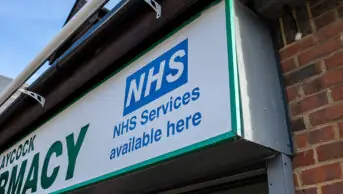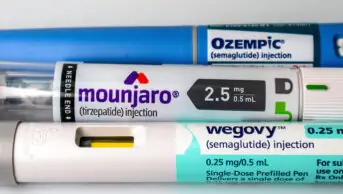
The National Institute for Health and Care Excellence (NICE) will not push ahead with its proposed introduction of value-based assessments — including burden of illness and societal impact — in the evaluation of new drugs for use by the NHS.
NICE made the announcement at a board meeting in Kendal, Cumbria, on 17 September 2014, in which it unveiled the results of a public consultation on the proposed changes. “It’s clear that just changing NICE’s methods will not overcome concerns about how the NHS accesses new treatments,” said NICE’s chief executive Sir Andrew Dillon in a statement after the meeting.
Any revamp of NICE’s current methods should now be part of a wider review of the innovation, evaluation and adoption of new treatments including those for cancer. Until then there will be no changes to the way that NICE evaluates drugs, including those for patients at the end of life.
In August 2014, NHS England announced that the Cancer Drugs Fund (CDF), which was set up in 2010 to fund drugs on the NHS that had been rejected by NICE, would start evaluating the anticancer drugs that it purchases with its £280m budget.
Implementation of a parallel evaluation process by the CDF at a cost per quality-adjusted life-year (QALY) threshold higher than that used by NICE has prompted NICE to call for the two processes to be aligned.
On 2 September 2014, Dillon told a parliamentary Common’s Health Committee evidence gathering session on NICE that it did not make any sense for the CDF to fund drugs that NICE had rejected. “It’s not a criticism of the decision to allocate more money to cancer. That’s a different issue altogether. It’s about an alignment of processes and methodologies that we need to get sorted out,” he said, adding that the introduction of an evaluation process for the CDF provided that opportunity.
“There is no reason at all why we couldn’t provide the basis for NHS England’s decisions on cancer treatments just as we do for all other treatments,” he said.
In his statement, Dillon said: “We also need to look at other processes, including the model of pharmaceutical research and development, the expectations that companies and patient groups have about how risk and reward is shared between the industry and a publicly funded NHS, and in the arrangements for commissioning expensive new treatments.”
He added: “This requires a wider review of the NHS’s arrangements for supporting innovation and evaluating and adopting new treatments. And it is essential that industry also recognises its role in making innovative treatments available to people at a fair price.”
NICE wants an agreement with NHS England and the Department of Health setting out the NHS’s willingness to pay for new treatments and what it considers special cases such as cancer and rare conditions. This agreement, NICE’s statement says, should incorporate more productive sharing of risk between companies and the NHS, potentially using NHS England’s “commissioning through evaluation” to progressively reflect the value of new treatments as knowledge of what they can offer patients increases.
Dillon told The Pharmaceutical Journal that, while he believed that NICE’s current approach for assessing cost effectiveness was about right, “it would be helpful for the NHS, the industry and patient groups to hear NHS England, NICE and the Department of Health share their commitment to getting the best outcomes for patients and the best value for money for the NHS, through the cost effectiveness threshold used by NICE. And where that includes adopting a different approach for some conditions, including cancer, being explicit about how NICE will work with and support that approach.”
Innovation office
The statement says that NICE also plans to establish an internal office for innovation to provide pharmaceutical companies with a “flight path” through the stages of the development, evaluation and adoption of their products into the NHS.
Carole Longson, director of NICE’s Centre for Health Technology Evaluation, explained to the board meeting that as well as acting as an appraiser, NICE could inform and stimulate better value propositions, “providing a space for innovation in both the utility of new treatments and their adoptability in the NHS”. NICE would work with NHS England and others, such as the academic health science centres and networks, “to manage down uncertainty through carefully controlled real world studies, and by encouraging companies to develop innovative pricing schemes”, she said.
Paul Catchpole, value and access director at the Association of the British Pharmaceutical Industry (ABPI), said that he was pleased that NICE had responded to the concerns raised by the industry and others, and acknowledged that “a more ambitious reform” of NICE methods and processes is needed.
“[We] called for an appraisal process that was fit-for-purpose and responsive to the new medicines that are being developed by the pharmaceutical industry, and NICE has recognised this by acknowledging that the kind of technologies it will be asked to appraise and the model of pharmaceutical R&D are changing,” he said.
NICE’s proposed changes, published on 27 March 2014 would have introduced value-based assessment (VBA) of new medicines for the NHS, introducing two new factors (known as modifiers) to the NICE technology appraisal systems: burden of illness and wider societal impact. At the same time the incremental cost effectiveness ratio (ICER), which addresses QALYs gained, would have remained unchanged at between £20,000 and £30,000 per QALY. (It can go up to £50,000 per QALY in exceptional circumstances.)
Proportional and absolute QALY loss values would have been calculated as part of a technology appraisal and used as the basis for assessing burden of illness and wider societal impact, respectively. A more favourable approach (ICERs above £20,000 per QALY) would have been adopted when considering treatments for people whose conditions had a progressively higher burden of illness and wider societal impact. While the proposals would have meant an end to the separate end-of-life protocol for life extending treatments, NICE argued that it would have broadened the circumstances under which the weighting it currently applies under the end-of-life protocol might be acceptable.
NICE’s consultation received responses from 121 organisations and individuals, of which the life science industry and patient groups each made up approximately a third. The rest were mostly from academics and clinical/professional organisations.
Despite reassurances from NICE, there was widespread concern about the potential for age discrimination if absolute QALY shortfall was used as a proxy for wider societal impact. Other concerns raised by respondents to the consultation about this modifier included that it would not capture the impact of a condition on those supporting the patient — family and carers — and that it was not clear how co-morbidities would be dealt with.
Most respondents said that the ‘end of life’ approach should be retained until it could be demonstrated that an alternative system would lead to the same, or similar, outcomes. Difficulties in assessing quality of life was raised as an issue in defining “burden of illness” and it was felt the modifier could disadvantage conditions with a delayed diagnosis, discriminate against younger people, and be heavily biased in favour of terminal illnesses.
Under the current system, a maximum QALY weighting of 2.5 is normally only applied to end-of-life treatments. Few respondents considered 2.5 to be a reasonable maximum for all treatment types when the cumulative impact of all the modifiers, including burden of illness and wider societal impact, were taken into account.
Catchpole said: “The exclusion of the end-of-life criteria was unacceptable to the pharmaceutical industry, and the agreed retention of this important criteria is undoubtedly the right decision for the moment.”


